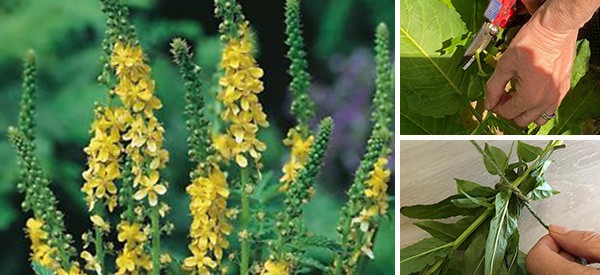
How to Grow, Harvest and Use Agrimony for Digestive Problems
There are many different species of Agrimony, but the one grown and used most often for its health benefits is Agrimonia eupatoria or common agrimony. Here’s how to Grow, Harvest and Use Agrimony for Digestive Problems — a forgotten remedy for bloating, cramps, and gut pain.
These plants bloom from June to September and both the leaves and flowers have been used for centuries to treat or ease a range of medical conditions and symptoms.
Growing Agrimony
Agrimony is common in the wild in many areas, so you could pick or forage the leaves, flowers, etc. if you wanted to. However, growing agrimony in your garden is not difficult.
In terms of position, you need to ensure the plants have full or at least partial sun and well-drained soil. Plants are unlikely to produce flowers without regular watering.
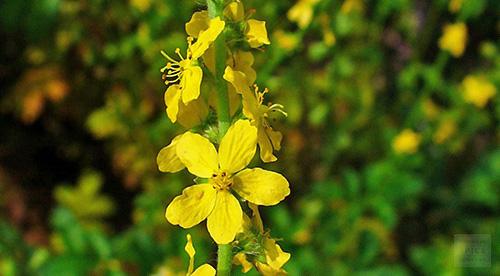
Agrimony can be grown from seed in winter or from root cuttings. If you live in a cold area, it’s best to start the plants off indoors until it’s warm enough outside and the seedlings have reached a height of about 4 inches or 10 centimeters.
Seeds germinate within three weeks, and after 90 to 130 days you will have mature plants you can harvest leaves, flowers, and seeds from. A word of warning, though: agrimony is considered an invasive perennial. If you don’t stay in control, it will take over your garden!
How to Harvest and Process Agrimony
If you are harvesting in the wild, it’s important to make sure that you have, first and foremost, correctly identified the plant. Remember not to pick too much from any one area as this protects the plant and means that foragers that arrive after you will also be able to harvest.
Harvesting should be done in midsummer and when the flowers are blooming and when the leaves are at their best. Be patient as leaves harvested too soon will be more astringent and will have lost some sweetness.
The steps to harvesting and processing agrimony are simple:
Harvesting:
You can either pick the whole plant or only the parts you want to use. For example, you might opt to only pick leaves as you need them. Other people also pick the flowers and thin stems or stalks.
If you want seeds for propagation purposes you will need the flowers but only harvest them once they have opened fully.
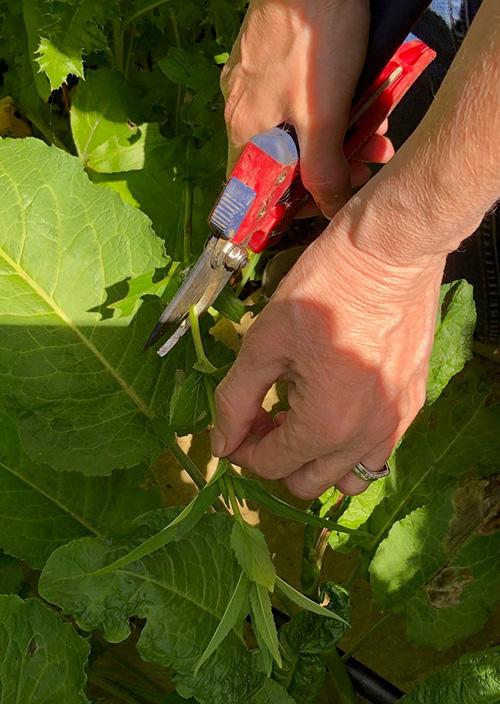
Drying:
The drying process takes approximately a week. You’ll know the leaves are dry when they become a little flaky. If you only pick the leaves you can air dry them by laying them out on a sheet of brown paper, a wire rack, or paper towel. If this is not practical for you, you can also use brown paper bags.
If, on the other hand, you have cut whole branches or plants, tie the stems together with string or twine to form a small bunch. The bunch should then be suspended from a hook or beam in an area that is dry, away from direct sunlight, and where the airflow is good.

Preparation:
Depending on what you want to use the agrimony for, the dry leaves can then be crumbled up into pieces or ground into a powder. Seeds that you want to use for propagation the following season can be stored in the freezer.
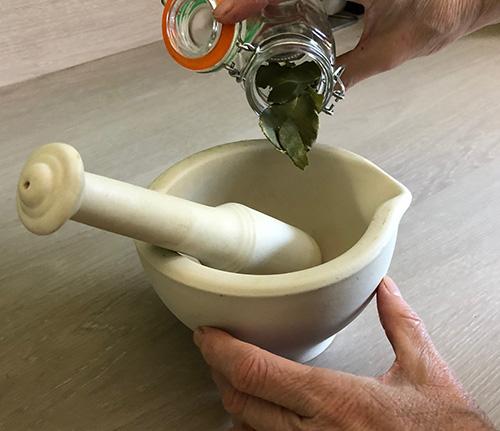
Storage:
If you are storing leaves or powder, it’s best to do so in thin paper bags or in airtight jars. Store them in a cool, dry place. However, many experts recommend that you don’t store agrimony for too long as it loses taste and – in some cases – its effectiveness.
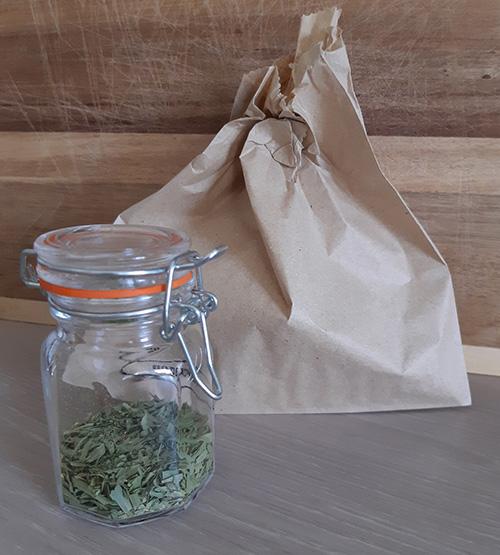
Using Agrimony for digestive problems
Agrimony is classified as a bitter herb. It also has a high tannin content and anti-inflammatory properties. These all offer benefits for the digestive system.
- The bitters stimulate the production of both stomach acid and digestive enzymes. This primes the digestive system to receive and effectively process food. Coupled with this is the herb’s ability to regulate the function and secretions of the gallbladder and liver. This, too, allows the body to better process nutrients.
- The tannins have anti-inflammatory properties and they tone the mucus membranes that line the digestive system. The herb regulates the production of mucus. This, like the bitters, aids the gut to better absorb nutrients. This is of great benefit for digestive conditions such as colitis, Irritable Bowel Syndrome (IBS), peptic ulcers, and mild diarrhea.
- The additional reason why agrimony is so helpful in terms of the digestive system is because it has anti-inflammatory properties. These help to soothe the lining or membrane of the digestive tract which can be helpful for treating mild diarrhea and easing cramps associated with IBS and other conditions. Agrimony can also reduce swelling in the digestive system.
It’s important to keep in mind that while there are centuries of anecdotal evidence about the effectiveness of Agrimony, there is insufficient evidence to be able to categorically claim clinical benefits.
Caution: Agrimony should not be used if you are suffering from constipation.
How to make Agrimony tea
The most popular Agrimony preparation is tea. You can use the leaves, flowers, and even the thin stems. Although dried leaves are more often used, you could use fresh ones too. How strong you make the tea will depend on what you are drinking it for.
For instance, strong tea is best as a gargle for a cough or sore throat, but very weak tea should be made if you are using it to treat diarrhea or a digestive system issue. The ratio is 1 to 2 teaspoons per one liter of boiling water.

Making the tea is as easy as one-two-three:
- Put the leaves in a container, pour boiling water over the leaves, and cover the container.
- Leave the tea to steep or draw for 5 to 15 minutes depending on the required strength.
- Pour the tea through a strainer to remove any plant matter.
Agrimony tea can be drunk hot or cold and you can add honey if you enjoy the taste more that way. We don’t recommend adding milk!
A note of caution about Agrimony
Just because something is natural does not guarantee that it is safe for all individuals and in all circumstances:
- Women who are pregnant, breastfeeding, or trying to fall pregnant shouldn’t use Agrimony
- Given this plant may lower blood sugar levels, it’s not recommended for diabetics unless they have had guidance about strength and dosage from a professional.
- In most cases, drinking too much tea can lead to constipation or even vomiting. It is thought that a safe and beneficial dose is one cup of Agrimony tea a day.
You may also like:
 How To Properly Dry Plants for Medicine
How To Properly Dry Plants for Medicine
The 10 Medicinal Seeds You Should Plant for a Complete Backyard Pharmacy (Video)
10 Teas That should Always be In Your Cupboard
If You See This Weed Growing In Your Yard, Don’t Pick It – Here’s Why
25 Reasons You Should Go and Pick Dandelions Right Now!

Thanks for the article! I’d like to use the flower in the tea, how do you suggest drying & processing the flower? Are we only to use the petals? Thanks for this
Hi Julianne,
Thank you so much for your comment.
Bundle them together by tying the stems with string or a rubber band and hang in a warm, dry place. It is usually easiest to hang them upside-down by the bundled stems to dry.
You can use the whole flower.
God bless!
Thanks for your updates on how herbs can benefit our health! Also thanks for the wonderful photos. Realizing what each herb looks like is a huge advantage!
Hi Becky,
Thank you so much for your comment.
We really appreciate your feedback.
God bless!
[…] How to Grow, Harvest and Use Agrimony for Digestive Problems […]
[…] How to Grow, Harvest and Use Agrimony for Digestive Problems […]